
If you have heard the term “networking resume” and been confused, you aren’t alone! Of course, a networking resume may be just that: a resume for a network engineer. But often, when you hear the phrase networking resume, it refers to a one-page document that you can use to introduce yourself to contacts and potential employers.
In this blog post, we’ll explain what this type of career document is, when you might want to use one, and what type of information you might want to include in it. Even better, we’ll give you examples of how to format networking resumes and links to download networking resume templates.
What is a Networking Resume?
As noted, a networking resume is a one-page introductory document promoting your qualifications and experience. You might also hear a networking resume referred to as a “professional summary” or an “executive value profile.”
An excellent way to think of your networking resume is as an elevator pitch on paper. Like an elevator pitch, it should be clear, direct, and persuasive. Most often, they are formatted in a way that combines a traditional professional biography and a chronological resume.
While they do not replace a traditional resume, they can be used as a complement to one. The same is true of using it to complement your biography; however, an increasing number of job seekers are using a networking resume instead of a biography.
How Is a Networking Resume Different from a Traditional Resume?
Networking resumes are often used in place of a full traditional resume when meeting with contacts or attending events where you will be networking.
A traditional resume for an experienced professional or executive is often two pages and sometimes longer, with in-depth detail about your experience and accomplishments. The best resumes are focused on a single goal and include all relevant information regarding your experience and education, usually organized in a reverse chronology. In addition, a well-written resume will include metrics and data to illustrate your professional accomplishments.
On the other hand, a networking resume is a shorter, more succinct summary of no more than a single page in length. This way, you can quickly and easily give contacts the highlights of your experience without getting bogged down in too much detail. Infused with your personal brand, this document helps to round out your professional history with some personality, aiding you in building connections with contacts in your network.
Here is an example executive resume and executive value profile/networking resume from our Exceed Collection. The resume provides a sophisticated format with space for career details, while the value profile is just one page and summarizes the same executive’s qualifications. Notice that the networking resume includes a professional headshot, while the traditional resume does not.
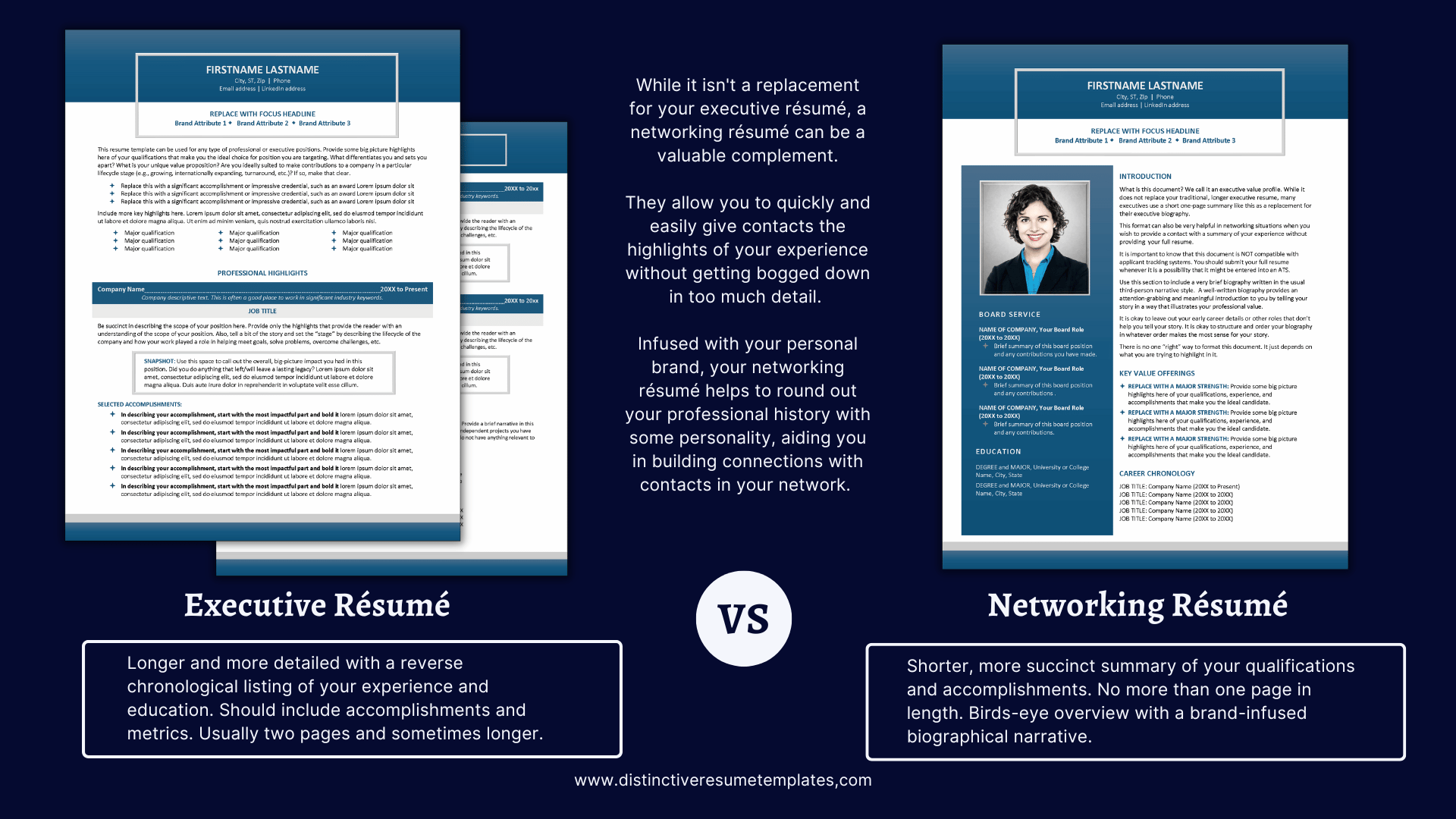
How Is a Networking Resume Different from a Professional Biography?
A professional biography written in the traditional format is a narrative document that provides a birds-eye view of your career and your story. Ideally, no more than one page in length, your biography will usually be organized in reverse chronological order, but not always. Most biographies include only a high-level overview of your career details, with only select roles, companies, education, and other credentials.
In comparison, many networking resumes include a concise biography, about two to three paragraphs in length. But in addition, it will often include other details such as a career chronology, a listing of core skills, educational details, and other relevant details.
Here is another example comparing a traditional executive biography with a networking resume from our Traditional Ventures Collection (the collection also includes a traditional executive resume).
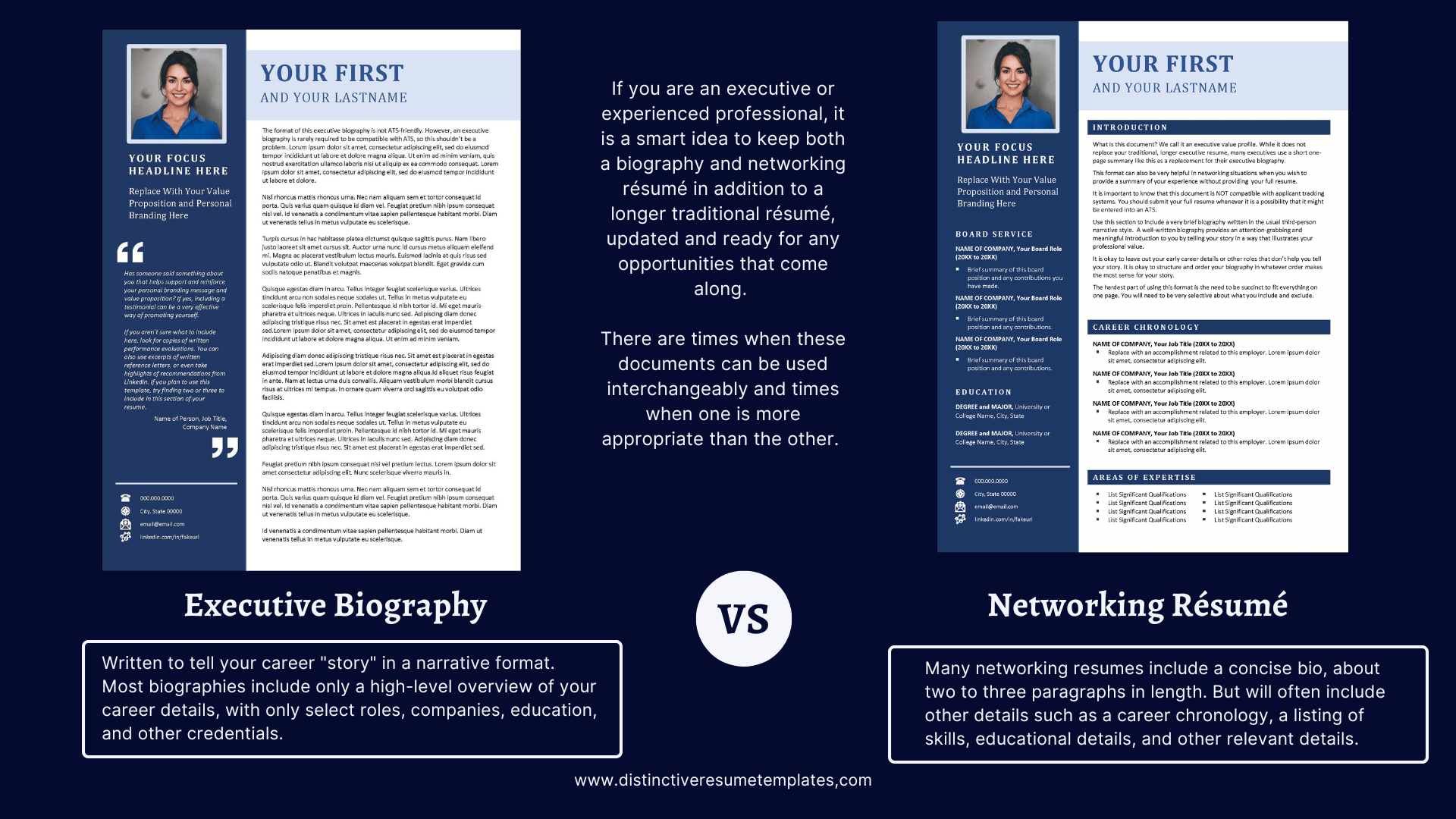
What To Include in Your Networking Resume?
Now that we’ve explained what a networking resume is, let’s review how to write one. Here are some tips:
Major Sections Usually Included
Optional Sections You May Include
Remember to keep it short and sweet no matter what information you choose to include in your networking resume! No more than one page, and use clear, concise language throughout. Of course, proofread carefully before printing or sending electronically. Typos or errors can make a bad impression!
You can see some examples of how you might include these sections in the following example networking resume templates.
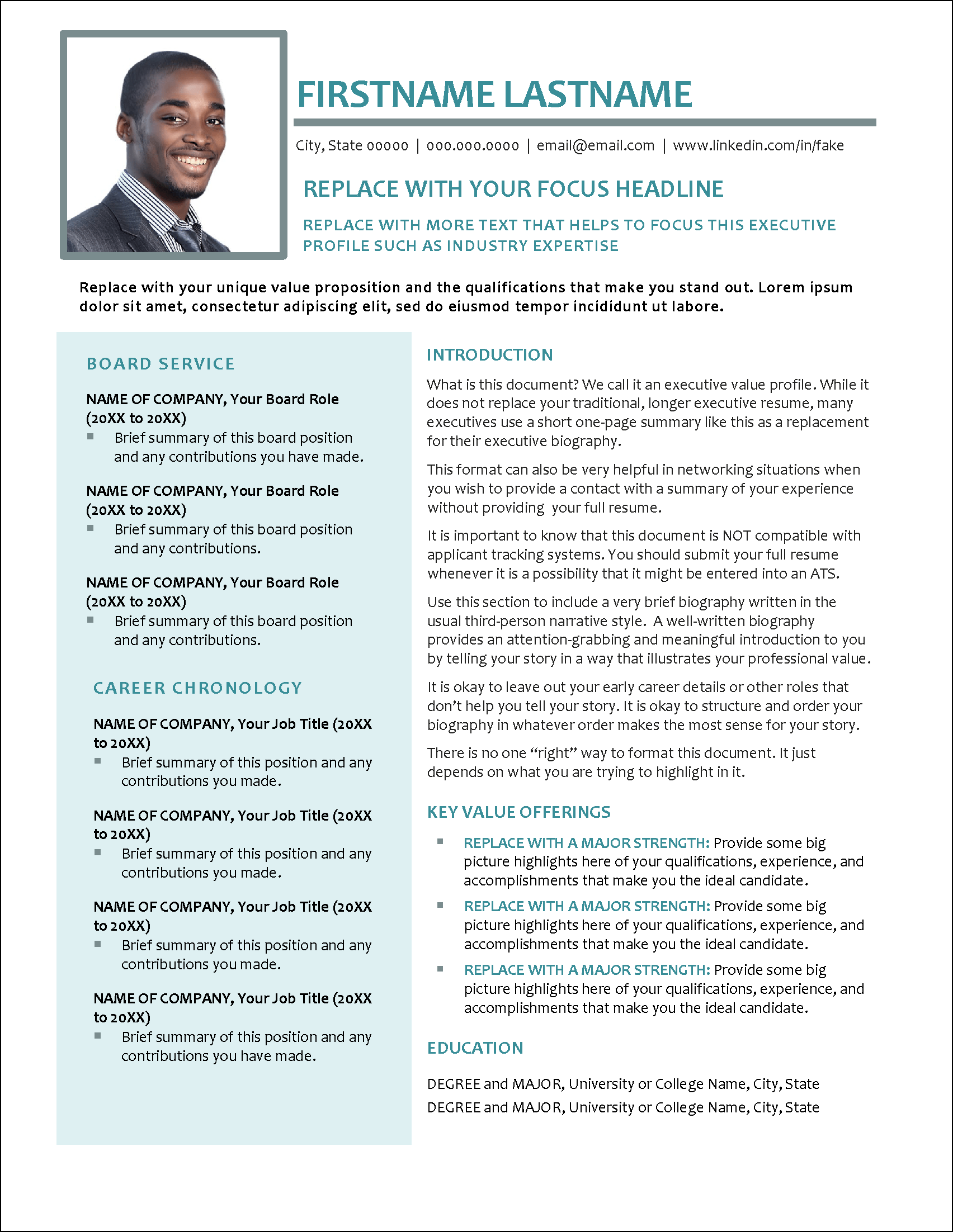
This example executive value profile (that is what we call a networking resume) is from our Alignity Collection. You can download it as part of our Alignity Coordinating Documents. The collection includes an optional traditional and stylish executive resume template.
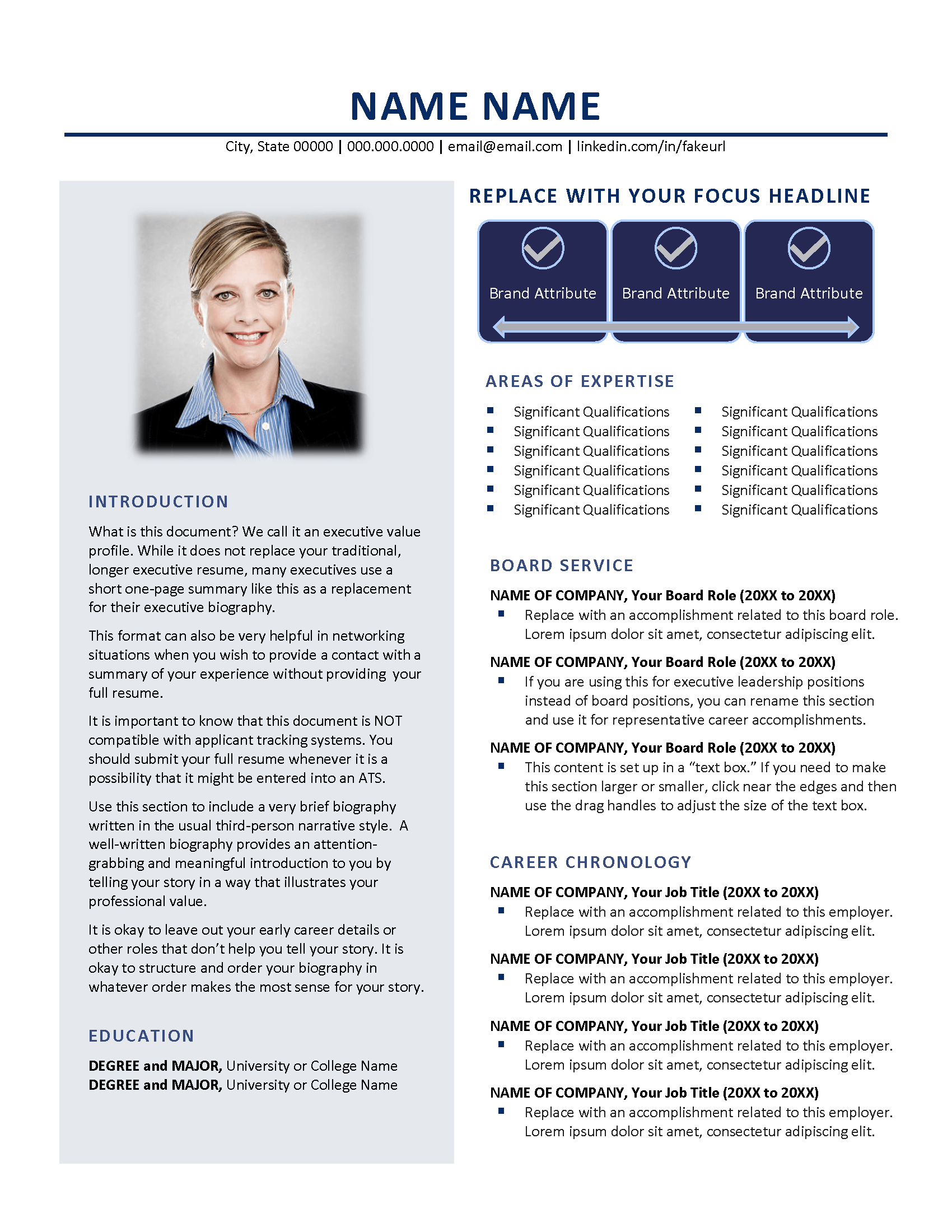
This example is from our Flexibil Collection. The executive value profile can be downloaded along with the other coordinating documents in the collection. The Collection also includes an optional resume template in a flexible executive format.
When Should You Use a Networking Resume?
When should you use your networking resume instead of your full, traditional resume? Here are some tips:
More Examples & Templates
As you can see from the example networking resumes we’ve shown you in this post, the design of your value profile is very personal. Of course, a networking resume is an important tool for job seekers and careerists, but it is just one of several self-marketing tools you should have ready.
The collections of templates offered by Distinctive Resume Templates include custom-designed templates for multiple document types created to coordinate. These include templates for documents such as your resume, biography, references list, resume addendums, cover letters, and, yes, networking resumes too. To avoid confusion with our ATS-friendly resume templates, you will find our networking resume templates referred to as “executive value profiles” within their collections.
We recommend that you coordinate all your career documents, as this helps to present a cohesive brand message and professional image. Here are some more examples of the executive value profile templates we offer.
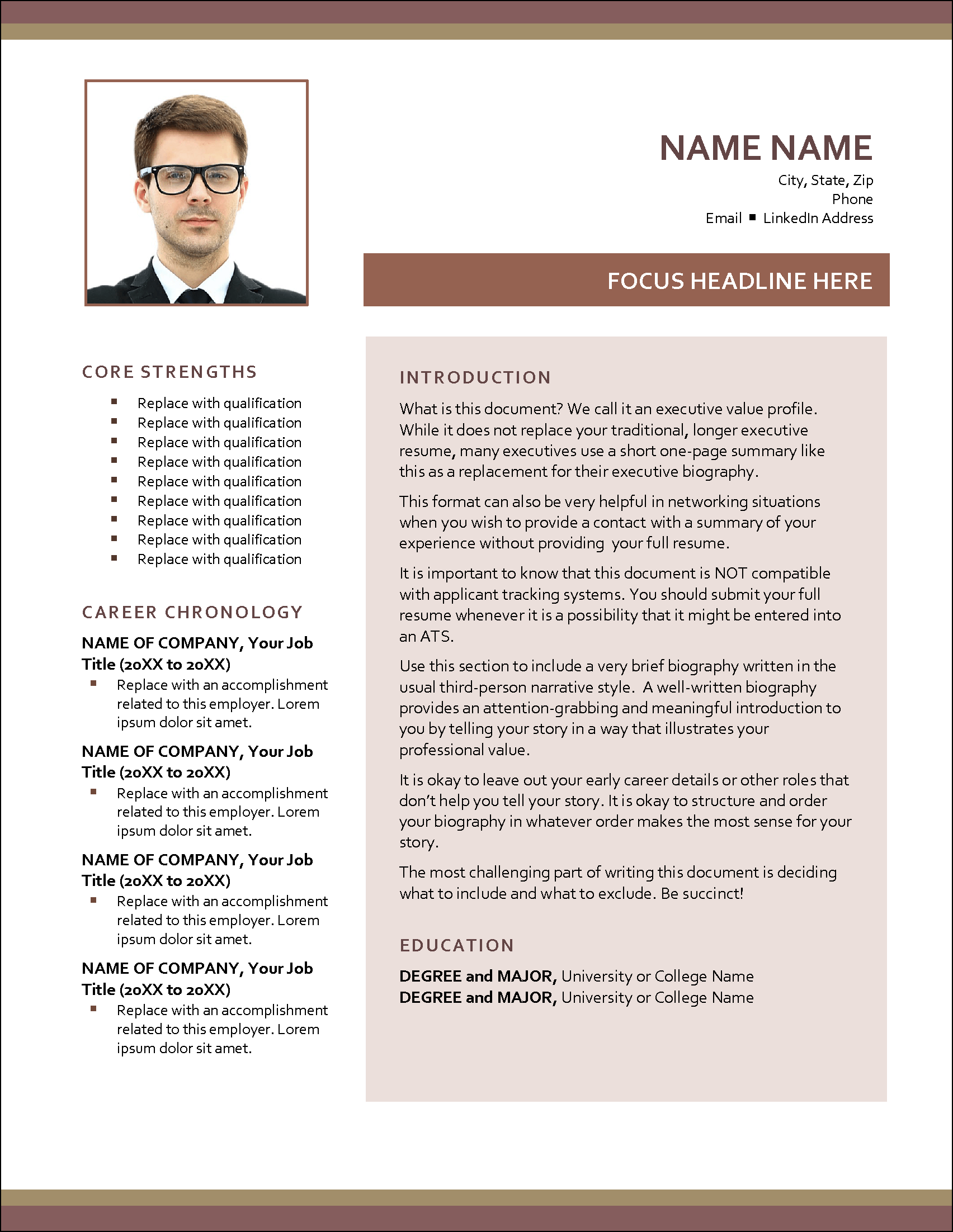
From our Authentic Elements Collection, this executive value profile template is part of the coordinating documents bundle. An optional resume template in a versatile resume format is available as well.
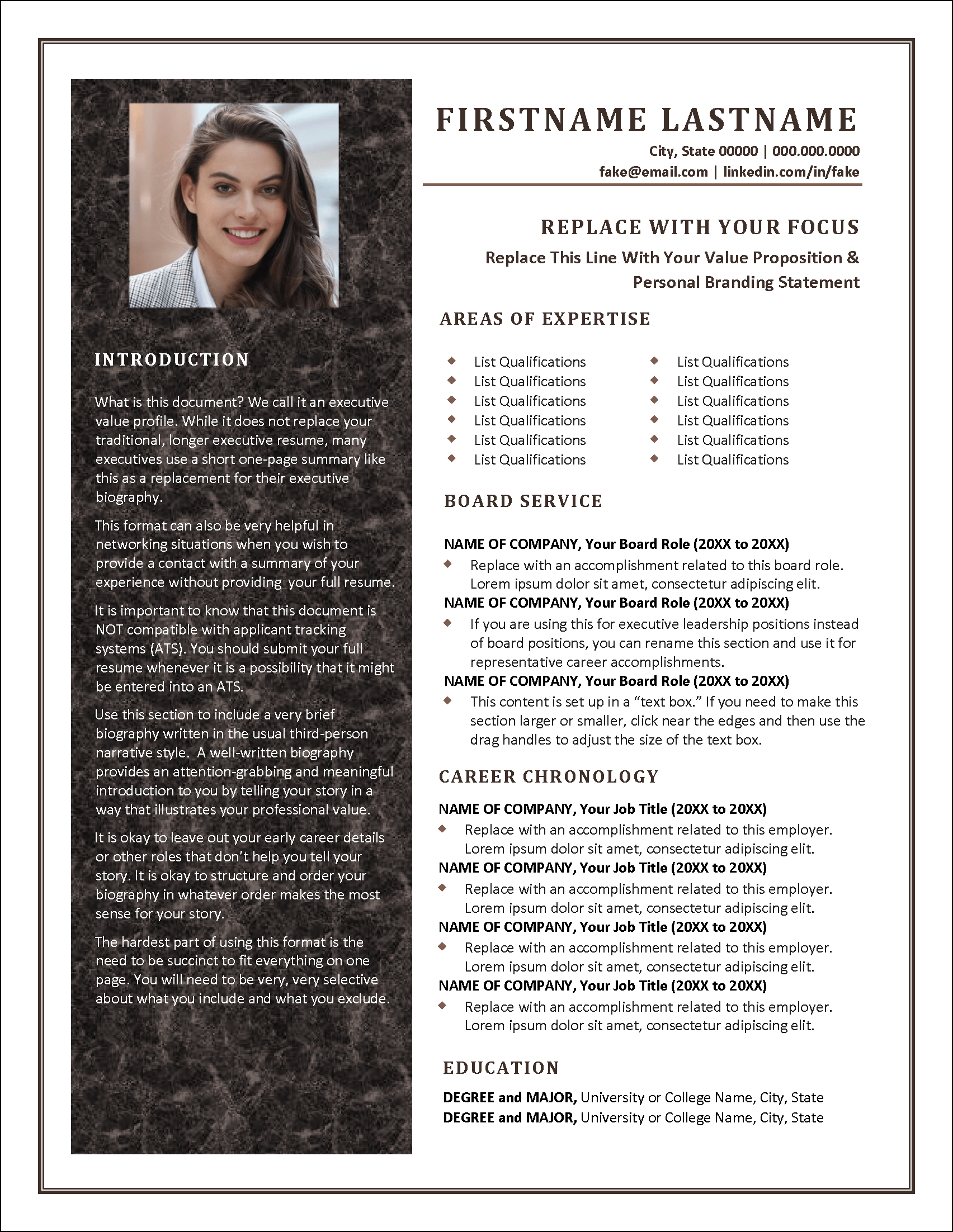
Part of our Folio Collection, the modern, classic style of this executive value profile template stands out! The collection includes an option modern classic executive resume template to ensure you present a cohesive brand image.
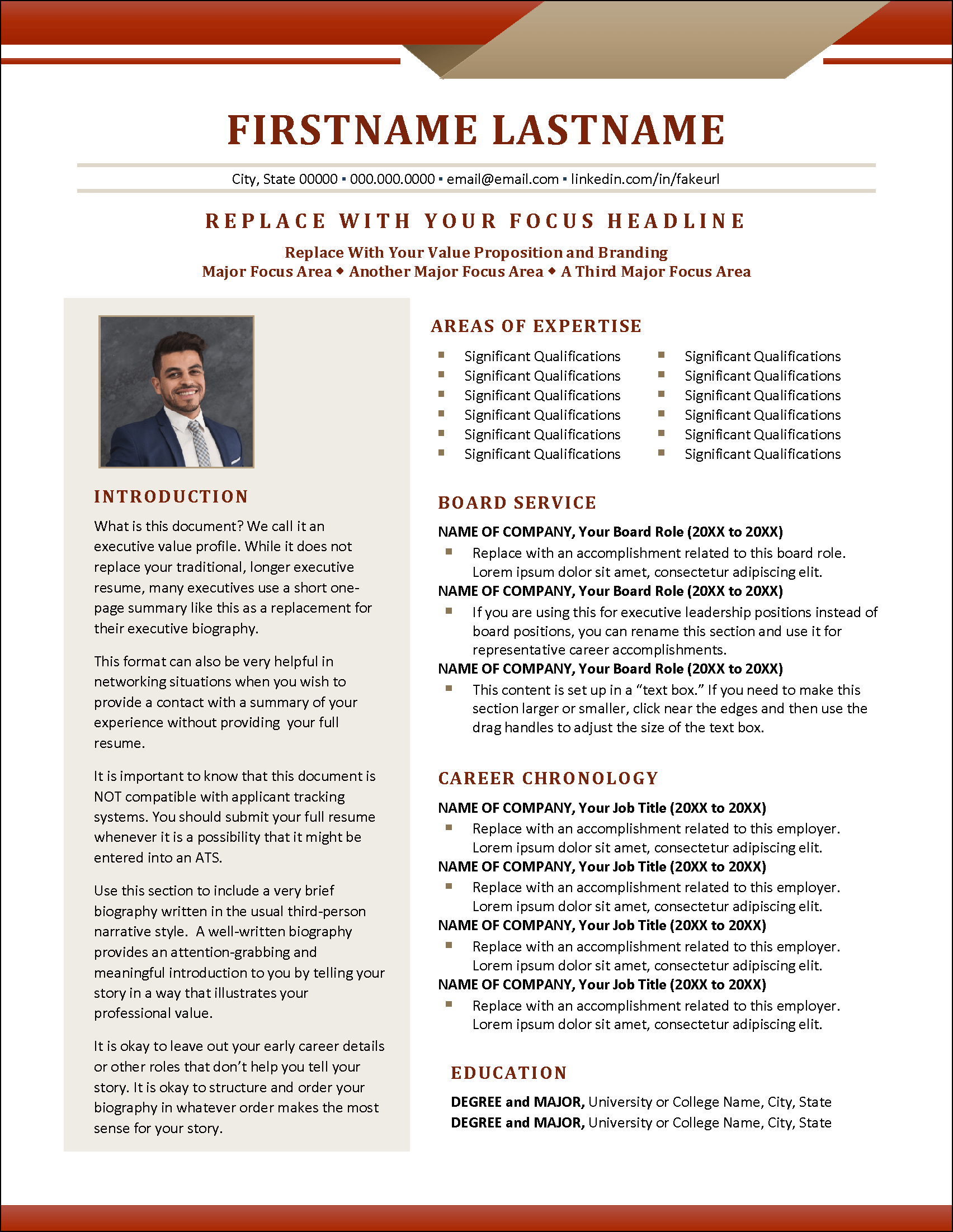
From the Businesswise Collection, this example executive value profile template captures attention. A business executive resume template designed to coordinate is an option.
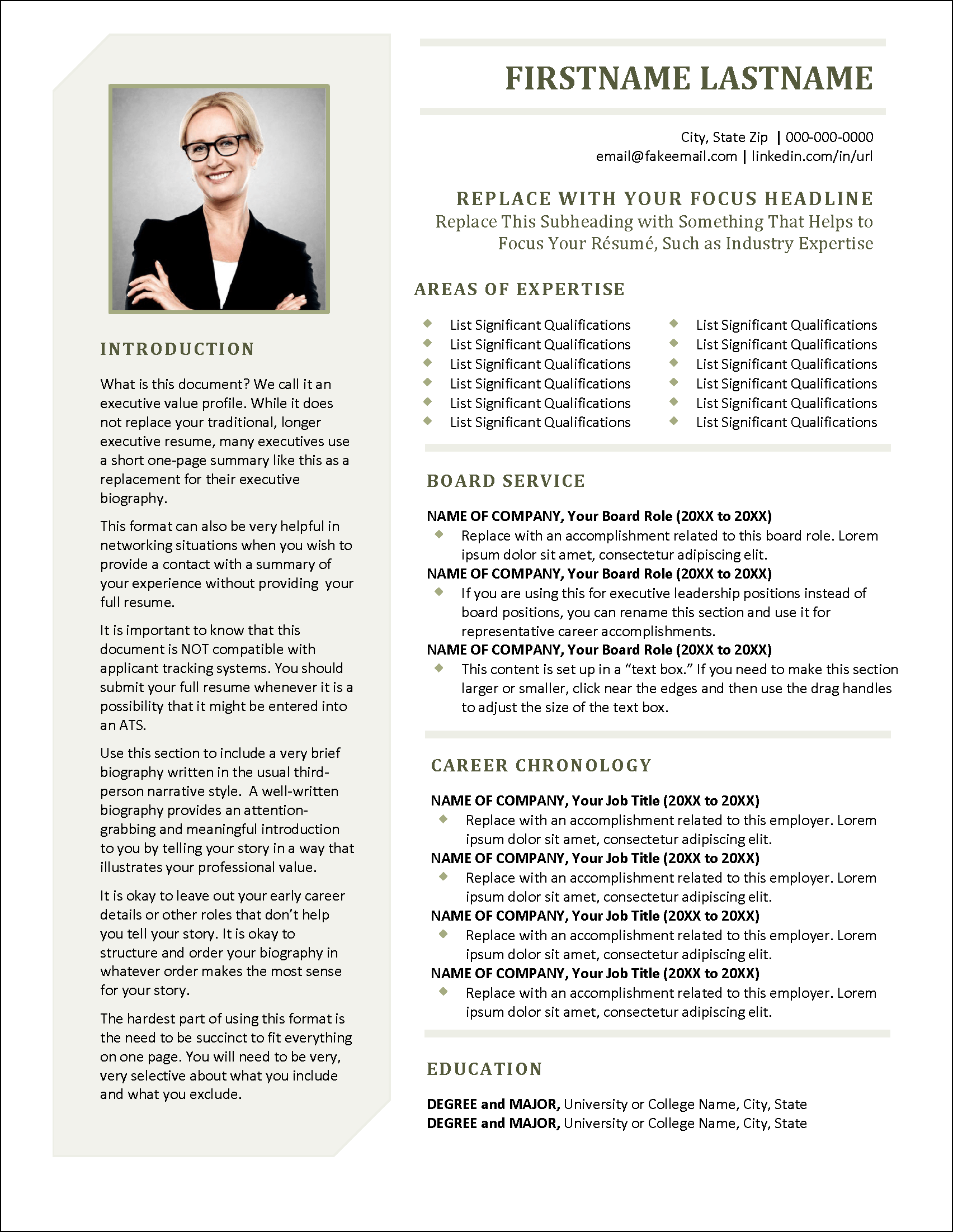
With an elegant look and feel, this executive value profile from the Adorna Collection is a favorite. The elegant executive resume template, available separately, is another customer favorite.
Frequently Asked Questions
What is a networking resume?
A networking resume is a one-page document that introduces you to contacts and potential employers. It highlights your qualifications and experiences, acting as an elevator pitch on paper. It’s often used as a complement to a traditional resume or biography.
How is a networking resume different from a traditional resume?
Unlike a traditional resume which provides an in-depth detail of your experience and accomplishments, a networking resume is a shorter, more succinct summary. It quickly gives the highlights of your experience without going into too much detail. This document also helps to show your personal brand, helping you build connections with contacts in your network.
What should be included in a networking resume?
A networking resume should include your contact information, a focus headline, an introductory summary, a career chronology, and your education. Optional sections could include a photo of yourself, a summary of skills, representative accomplishments, board experiences, volunteer experience, memberships, and awards and honors.
When should you use a networking resume?
You should use a networking resume in situations like networking events, informational interviews, when making a career change, when building your network, and when pursuing board of director positions. It’s particularly useful in face-to-face situations where a full resume might be too much.
How does a networking resume differ from a professional biography?
A professional biography is a narrative document that gives a birds-eye view of your career. It usually only includes a high-level overview of your career details. On the other hand, a networking resume often includes a concise biography as well as a career chronology, a listing of core skills, educational details, and other relevant information.






